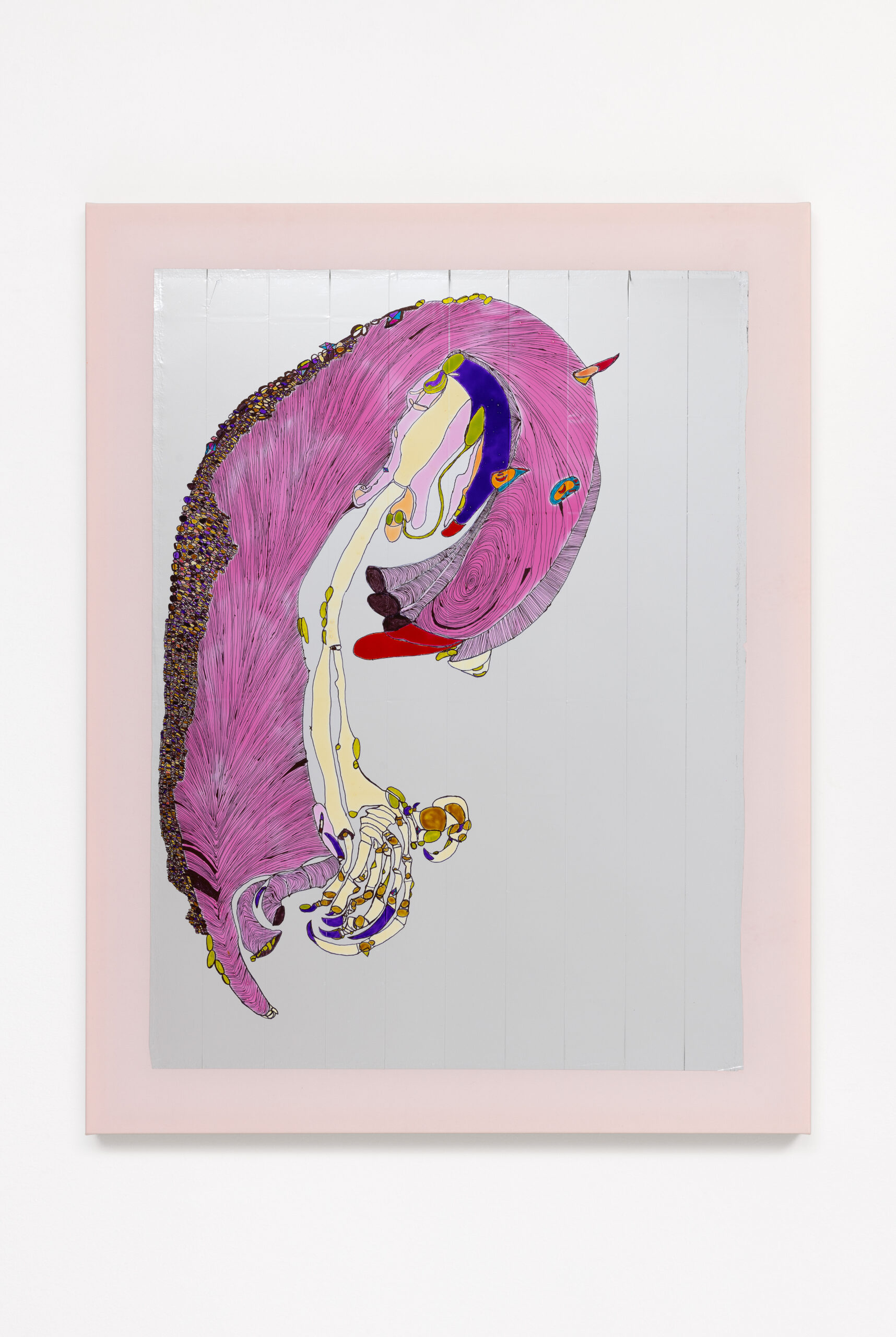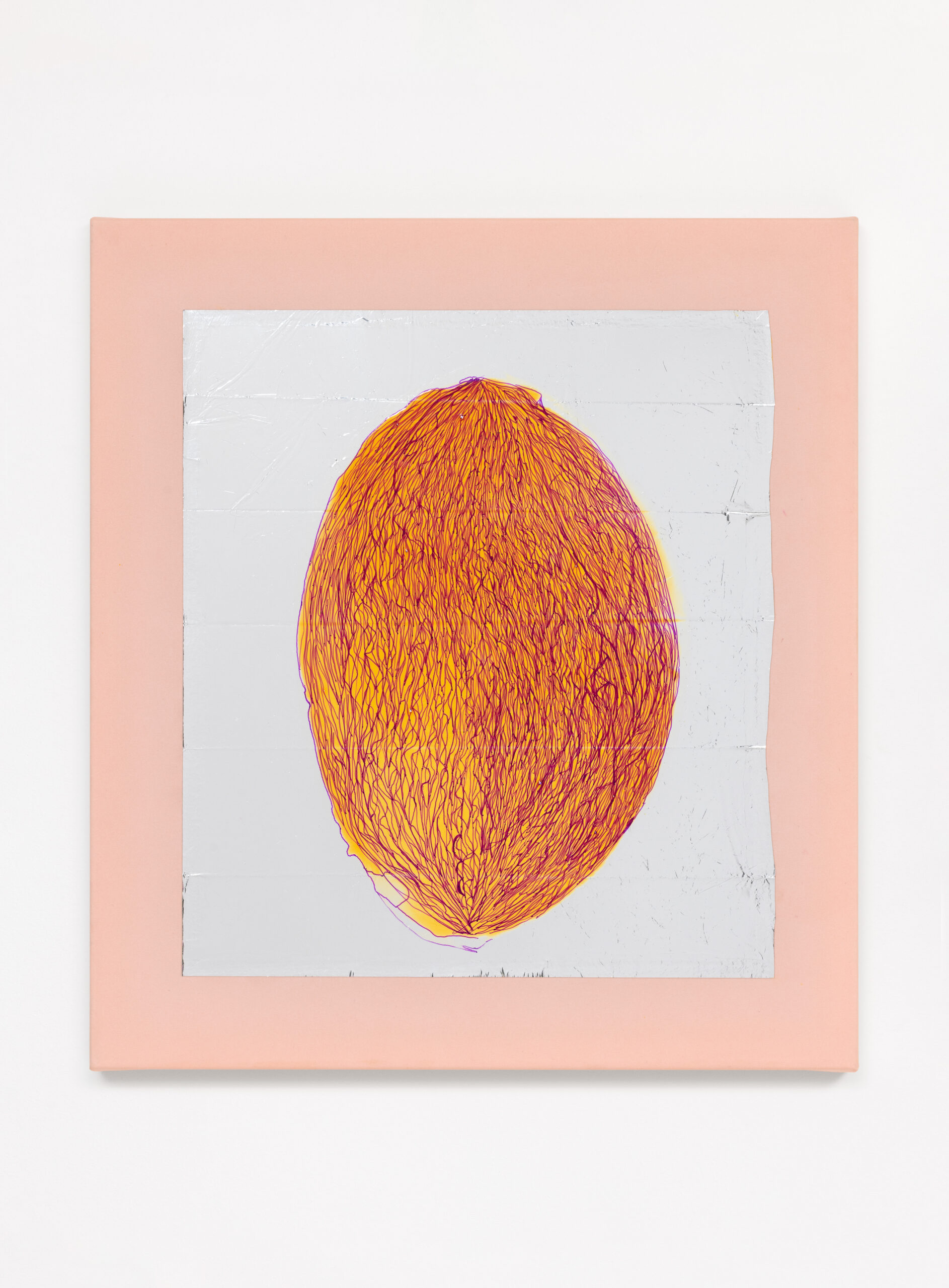Nothing can quite prepare one for the experience of visiting FREAK YOU!, the first U.S. exhibition by the Italian artist collective Atelier dell’Errore, in the two-floor space of Kaufmann Repetto Gallery at 55 Walker Street.
Overexposure to contemporary art in New York—be it in museums, fairs, galleries, or artist’s studios—makes one forget the transformative, mind-opening effect that original art can ignite. As if alluding to the geographic and cultural travel from Reggio Emilia, home of Atelier dell’Errore, to Tribeca, upon entering the gallery we encounter two colorful “sails” (Vela Alpina 01 and Vela Alpina 02) fastened to the floor and ceiling with tie rods. Bold and bright, the sails fill the room with sculptural presence, propelling the viewer into mythology and half-expecting to see the Greek God Boreas—long beard and billowing robes—blowing into them. Luca Santiago Mora, the lanky, intense, and passionate artistic director of the collective, provides some background: “we were offered the opportunity to create a sail for the fishing boat ‘Edipo Re’ a vessel with an interesting story. Pier Paolo Pasolini used it for his film Medea. Before that, after WWII, fishermen had used it to smuggle fellow Italians from the Istrian coast who had been assigned to Yugoslavia back into Italy. We were interested in the theme of the voyages of refugees.”

With the help of a sailmaker’s workshop, Atelier Dell’Errore created the two sails out of the isothermal rescue blankets routinely handed to freezing and starved African migrants arriving on the Italian coasts. A light-reflecting, slippery material, the rescue blankets are a challenge for the intricate, multilayered technique of the drawings, gold leaf, and paint fancifully applied to them.
In addition to the second sail, the main room on the ground floor contains 11 startling “portraits” of various sizes of a fantastic imaginary earth, airborne, and possibly water animals. Created on the semi-reflective rescue blankets, the works engage us in a double take. As we observe the individual animals looking straight at us, we also see ourselves reflected in the work. The effects suggest an enigmatic question: “who is watching whom?” The more one observes the more these creatures come to life. The drawings are executed in mixed media (ink, acrylic, marker, gold leaf, and enamel) and mounted on raw silk, often painted in shades of pink. The series is titled “Unknown Pleasures” which refers to the implied wild sexual lives of the animals. We are in the realm of unbridled imagination; the creatures’ names mock Greek divinities, and their transgressive behavior satirizes the promiscuity of Olympian feasts. One finds fanciful explorations and spoofs on notions of polyamorous creatures, autoerotic manics, hermaphrodites, and sexual mutants. Far from any literal representation of today’s gender definitions, divisions, and controversies, the emotional temperature is playful and joyously unbound: the artist’s laughter and irony are pervasive. Sinuous lines, attention to detail, expertly applied gold leaf details, and a bright color palette make this menagerie of mythological libertine animals a kind of theater. The viewer activates the possible storylines of this otherworldly orgiastic feast.

The titles of the works convey their spirit; among others “Urechis Ero-Thanatos”, “La Magna neo vagina di Gea”, “La Lesbo Priapa” and “Ares X Rated”. These audacious, outlandish, powerful works are a world in themselves; references to art history or specific contemporary artists seem distant echoes, points of departure. If one wanted to, the organic shapes and irregular concentric lines and spirals can recall Louise Bourgeois’s drawings, and the almost mirroring backgrounds can bring to mind the work of Michelangelo Pistoletto, yet the work is in no way derivative. The room glows with the works, which together form a sort of mythological era: the Pink Age. Before descending to the floor below, Luca Santiago Mora tells me more about the collective and how his involvement with them began: “I have been with these artists now for 23 consecutive years… A therapist working on creative processes at the children’s neuropsychiatry department of Reggio Emilia’s Hospital was taking a leave and asked me to take over temporarily. She never returned, and I took over. I had not planned it this way, but it has become my life.”
Luca Santiago Mora, originally from Bergamo, is an architectural photographer and video maker. He has made Atelier Dell’Errore one of the more unique artistic collectives in terms of duration and achievements anywhere in the world. Starting when most of the participant artists were between nine and twelve years old, he has worked with them continuously until today, when the youngest is 16 and the veterans are in their early 30s. Atelier dell’Errore is Mora, with 11 young artists working together every afternoon all year round. “There are two basic principles of the Atelier method: you do not erase and tear up what you have started; and all our work has a single theme: animals”.

These strict parameters counterintuitively allow for vast variation and artistic expression. The collective’s animals are fantastical creatures that imply open narratives and imaginary worlds. They are given names that are no less fantastic than the drawings themselves. All work is conceived and executed collectively; each artist specializes in a specific task: drawing, applying gold leaf coloring, etc., and the tasks can change over time, like in a Renaissance workshop. To my question as to why they concentrate only on animals, Mora smiles and tells me: “One of the boys told me: if we make human figures that are strange and different, they will call them monsters or freaks but a strange animal will be accepted as a figment of the imagination”. The members of the collective have different degrees of “neurodiversity”; some can hardly speak, but Mora has found a way for them to work together and understand each other. Both their talents and enthusiasms are palpable in each of these extraordinary works.
As we descend to the basement, a kind of descent to Hades (the acronym for Atelier dell’Errore in Italian spells Ade, Hades), we find a memorable video performance where two of the more vocal and confident members of the collective launch into a hilarious, profoundly moving tirade on the psychosexual aspect of their work; like in Greek drama, the themes are announced and expanded upon with wry self-irony. The performer’s self-confidence (in English!) and body language parallel the powerful emotional impact of the visual works.
If upstairs we were in the Pink Age, now we find ourselves exploring the Gold Age. On the left one finds the large format (59x 309.5 in.) The Ghost Parade that evokes snake-like movement and mystery in pencil marker and gold leaf on paper, powerful creatures with the same techniques plus acrylic on paper. The eyes get lost in tracing the meanders of the Collective’s imagination in five stunning variations of the enigmatic creatures here executed with the same techniques plus acrylic on paper, with large sections in gold leaf setting the tone.

“Every time Francesca Kaufmann and I encountered the work of Atelier dell’Errore, we were fascinated by the unique, mysterious character of the works, but it was Julia Koropolous, who manages the AdE communications, who brought to our attention the collective, and the amazing project and people that inform it,” says gallery owner Chiara Repetto. “We immediately felt the urgency to amplify their voices, the resilience, and passion of these twelve individuals who, against all odds, joined forces and became an artistic entity able to produce beautiful and meaningful art.”
The whole gallery staff is deeply taken by this show. “It has been fascinating to witness the precision and intentionality within every element of Atelier dell’Errore’s show, the contraction and release of their creative hive mind in real-time, and the ease with which they have transformed the gallery into a world of their own, using a unique language built out of endless wonder and imagination,” says Associate Director Victor Lozano.
As the members of the collective reached 18 years, the workshop could no longer be under the aegis of the children’s neuropsychiatry department. At that point, Mora transformed the project into an artist cooperative, which is now housed on a floor of the beautiful Collezione Maramotti complex in Reggio Emilia.
Atelier dell’Errore has produced some lovely books and has shown in galleries and museums in Italy and Europe.
Spending some time at Kaufmann Repetto with the works of Atelier dell’Errore is a transformative experience, transporting the viewer to an imaginary world created with urgency, freedom, and creative abandon. Art-making cannot cure neurological conditions, but this body of work can potentially change the lives of the artists and the audience that encounter it.












